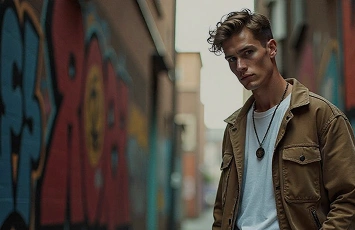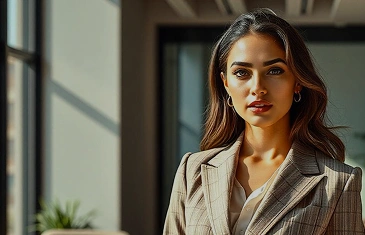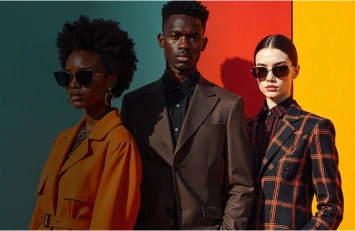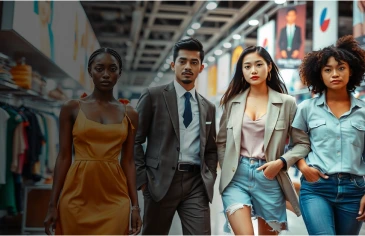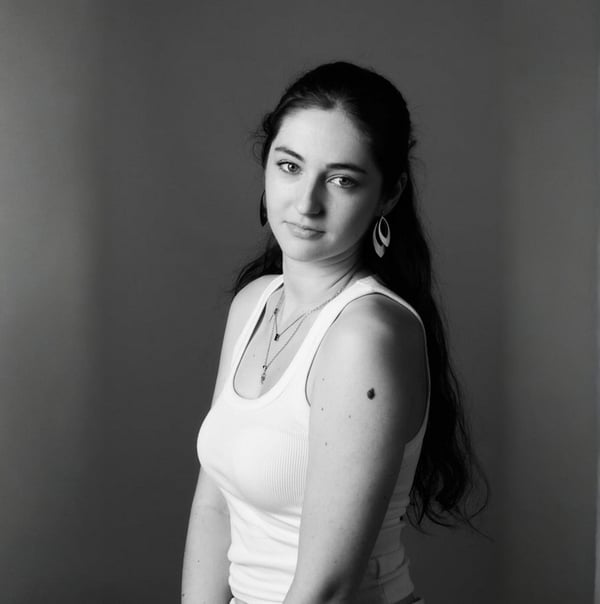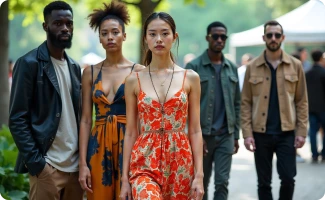
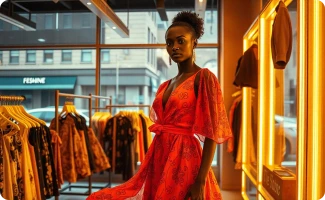
Best 5 AI Color Changer Tools to Instantly Transform Images and Visual Content
Table of Contents
Ever looked at a product photo or design and thought, “Hmm, this would look way better in blue”? That is what we call recoloring. Recoloring used to mean hours of work in Photoshop, masking, brushing, fine-tuning... But now, AI recoloring tools are making that process as easy as clicking a button. Whether you’re a fashion designer, eCommerce pro or UI/UX nerd, these tools can seriously level up your visual game.
Let’s dive into what these tools actually do, why they matter, and which ones are killing it in 2025.
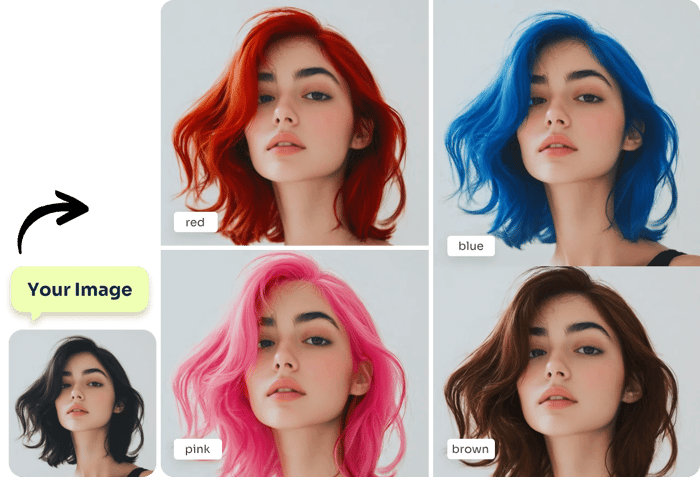
What Are AI Color Changer Tools?
AI color changers are smart editing tools that use machine learning to recognize different elements in an image and apply new colors in a realistic, non-destructive way. Unlike manual recoloring, which often requires intense Photoshop skills and hours of tweaking, these tools automate the process. All you do is upload your image, select the area or object you want to recolor, pick a new shade, and boom, done.
They’re part of a larger trend of using artificial intelligence in design workflows to save time, reduce manual labor, and improve creative freedom.
Some tools even let you generate color edits based on text prompts (like “turn this jacket pastel pink”), making them even more powerful.

Why Use AI to Recolor Images?
1. It’s a Massive Time-Saver
No more spending hours editing product photos just to launch a new color variant. An AI recoloring tool can handle that in minutes. For platforms like Modelia, which empower fashion retailers to generate visuals of clothing in multiple colors, this means faster go-to-market strategies without endless photoshoots.
2. Experimentation Without Commitment
Let’s say you’re not sure which color will hit best with your audience. Try them all! Want to see if a soft lavender dress pops more than a bold red one? Just upload, recolor, and compare. AI tools make creative testing fast and easy.
3. Super Realistic Results
These tools have come a long way. Modern AI recoloring tools don’t just slap a color overlay on your image, they understand lighting, shadows, and textures. That means recolored images look like the real deal, which is a huge win for eCommerce and digital design.
4. Consistency Across Visuals
Branding is all about consistency. If your red is your red, you need that exact tone replicated across products. Many tools let you input specific color codes, so everything stays on brand, without endless tweaking.
5. Low Cost, High Reward
Hiring a professional editor or doing complex retouching in-house can get expensive. AI tools offer a scalable solution, especially when you’re working with a lot of assets.
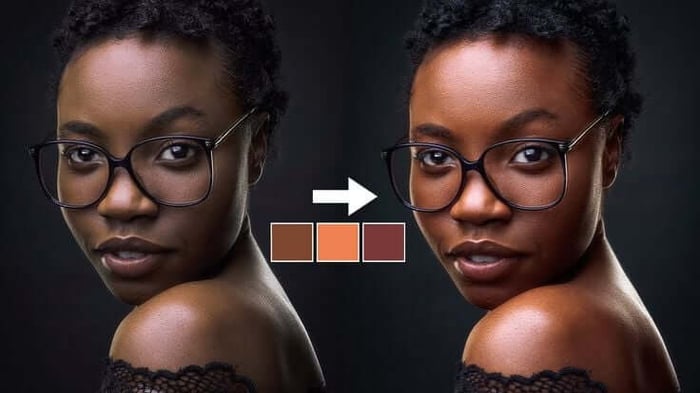
Best AI Color Changer Tools in 2025
Let’s break down the top tools out there right now. We’re judging them on image type support, ease of use, and accuracy.
Tool 1. Modelia
A powerful benefit of using AI recoloring tools, especially in combination with platforms like Modelia, is the ability to localize content for different markets without starting from scratch. Let’s say your fashion campaign is launching in Europe, Asia, and North America. Preferences around color and style can vary wildly between regions. Instead of reshooting the same items for each market, brands can use AI to recolor garments and adapt visuals to local tastes in a matter of minutes. This kind of agility wasn’t even imaginable a few years ago, and now it’s becoming a standard part of digital fashion marketing.
Also worth noting is the sustainability impact of AI recoloring. Every physical sample you don’t produce, and every shoot you don’t schedule, means fewer materials used, fewer carbon emissions from logistics, and less waste overall. For fashion retailers aiming to reduce their environmental footprint, digital solutions like Modelia's AI color changer, paired with smart recoloring tools, are a huge step forward. You're not only saving time and money, you’re also contributing to a more sustainable, tech-forward approach to fashion and design.
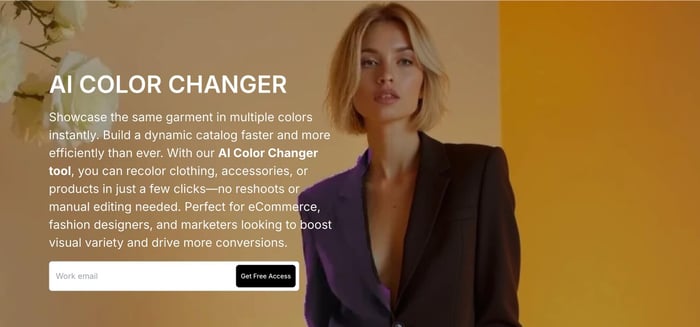
Try Modelia's AI recoloring tool for free!!
Tool 2. AI Ease
Image Type Support: People, clothing, backgrounds
Ease of Use: Upload, click, recolor done
Accuracy: Solid for basic recoloring
This tool is perfect for quick changes and supports color modification through simple prompts or palette choices. It's ideal for marketers or creators who need fast visual tweaks for social or digital content.
Tool 3. Pixelcut
Image Type Support: Apparel, product images
Ease of Use: Clean UI, drag-and-drop interface
Accuracy: High, great at isolating and recoloring objects
Pixelcut is especially popular in retail and social commerce. Retailers using AI platforms like Modelia can recolor AI-generated images of models wearing a single garment and rapidly produce visuals of that same item in multiple shades, ready for catalog upload.
Tool 4. iFoto Color Changer
Image Type Support: Product photos, furniture, packaging
Ease of Use: Designed for marketers and retailers
Accuracy: Excellent for product visualization
A great option for product-heavy businesses. Instead of photographing each item in every color variant, iFoto lets users edit one image and visualize all possible versions, perfect for streamlining catalogs and PDPs.
Tool 5. Pixlr Color Replace Tool
Image Type Support: Anything that needs detailed recoloring
Ease of Use: Intermediate more options, more control
Accuracy: High, especially when combined with manual touchups
Pixlr is ideal for those who want more manual control alongside AI support. Designers working with images created on Modelia can use Pixlr to fine-tune shadows, color blending, or texture highlights to make their final visual stand out.

Top Use Cases: eCommerce, Fashion, UI/UX Design
eCommerce
Retailers need flexibility and AI recoloring gives them that. Instead of shooting every product in every available shade, businesses can shoot once and recolor digitally.
Retailers who use Modelia to generate AI visuals of their garments on diverse models can then integrate AI recoloring tools to showcase the same outfit in all available color variants. This not only saves on production costs but allows for quicker product page development and A/B testing.
Fashion Design
Designers can ideate and present entire collections digitally before sampling a single piece. AI recoloring allows them to experiment with new palettes, evaluate seasonal color trends, and build virtual prototypes. Combined with Modelia’s tools for visualizing clothes on AI-generated models, recoloring lets designers and brand marketers create cohesive, on-brand visuals fast.
UI/UX Design
In interface design, color plays a critical role in usability, brand recognition, and user emotion. Designers can now recolor components like buttons, cards, or full screen mockups on the fly, enabling quick exploration of design directions or adjustments for accessibility.
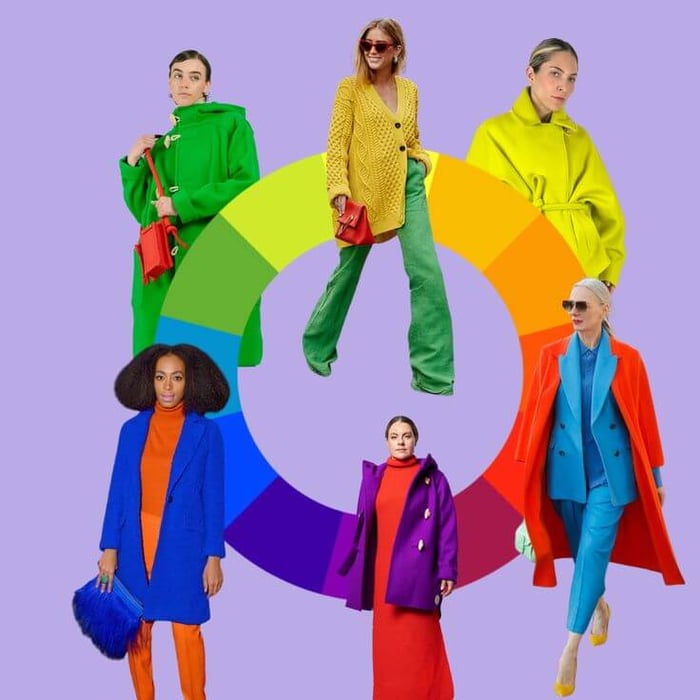
How to Use AI Color Changers Efficiently
Even though these tools are designed to be super intuitive, getting the best results still requires a bit of know-how. Using an AI recoloring tool isn’t just about clicking buttons it’s about using them intentionally, understanding how the AI “sees” your image, and making smart choices that elevate your visuals instead of just changing them.
Start With High-Quality Images
If your photo is grainy, poorly lit, or out of focus, the AI will struggle to accurately detect the boundaries of objects and materials. This can result in color spillovers, weird smudges, or unrealistic shading. Always use sharp, well-lit images with good contrast.
Be Strategic With Your Image Selection
Select photos where the object or garment to be recolored is clearly visible and not obstructed by shadows, overlaps, or complex backgrounds. AI models, like those generated on Modelia, are typically created with recoloring in mind clean poses, consistent lighting, and minimal distractions.
Don’t Just Guess Colors, Use Codes
Plug in exact color values (HEX, RGB) to match brand palettes or seasonal themes. This ensures consistency across all your visuals. For fashion retailers using Modelia, that means every recolored outfit matches the brand’s campaign aesthetics down to the last pixel.
Check Your Results, AI Isn’t Perfect
Zoom in and inspect the output. Look for missed spots, rough edges, or any elements that need manual tweaking. Some tools let you brush in or erase corrections, so take advantage of those features for a polished final product.
Combine Tools When Needed
Use one AI tool to batch recolor and another (like Pixlr) to add subtle shadows or highlights back in. Combining tools gives you flexibility and lets you customize to the quality level you need.
Maintain Consistency Across Assets
Whether you're building out a collection, a landing page, or a social feed, visual cohesion matters. AI tools, combined with platforms like Modelia, let you plan entire campaigns with consistent colors, model poses, and image styles, without needing new shoots for every variant.
Use Prompt-Based AI Smartly
Text prompts can be powerful if used right. Be specific about color tone, material texture, or desired mood. “Make this dress a light pastel green with a satin finish” will yield better results than “turn it green.”
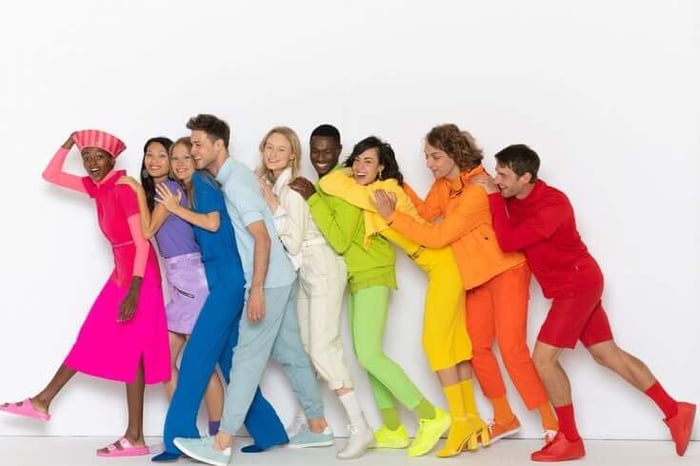
Virtual Try-On Revolution: Experience Fashion, Makeup & More
Virtual try-on is one of the most exciting applications of AI in fashion and retail today. Instead of just seeing a product image in different colors, shoppers can actually see how that product looks on them, or on a model that closely matches their body type, skin tone, and style preferences.
This technology uses computer vision and AI-generated models to simulate clothing, accessories, or even makeup directly on a person’s image or video. It’s like a digital fitting room that works 24/7, no matter where your customer is.
Why It Matters
Boosts Confidence Before Purchase
One of the biggest challenges in eCommerce is the hesitation customers feel when they can’t try something on. Virtual try-on reduces that uncertainty by showing a realistic preview, which directly translates into higher conversion rates and fewer returns.Personalization at Scale
Instead of generic product shots, virtual try-on can adapt visuals to each shopper. Imagine showing the same dress on different body types, skin tones, and sizes instantly. With platforms like Modelia, brands can create these personalized experiences without the need for extra photo shoots.Omnichannel Integration
Virtual try-on doesn’t just live on eCommerce websites. Brands are integrating it into apps, social media, and even AR mirrors in physical stores. This makes shopping interactive and fun, while blurring the line between online and offline retail.
Use Cases
Fashion Retail: Customers can see how a jacket fits on an AI model with their proportions, then switch colors instantly using recoloring tools.
Beauty & Makeup: Try on lipstick shades or eyeshadow palettes virtually, saving trips to the store.
Eyewear & Accessories: Glasses, hats, and jewelry can be previewed digitally with accurate scale and positioning.
How Modelia Fits In
Modelia combines virtual try-on technology with AI recoloring to give fashion retailers an unbeatable edge. Brands can generate realistic visuals of their products on diverse AI models, recolor them into multiple variants, and let shoppers interact with the pieces virtually. The result is a dynamic product experience that feels personal, immersive, and highly scalable.
Virtual try-on is no longer a futuristic concept, it’s here and it’s changing how people shop online. Retailers who embrace it early will stand out with higher engagement, stronger customer trust, and faster global growth.
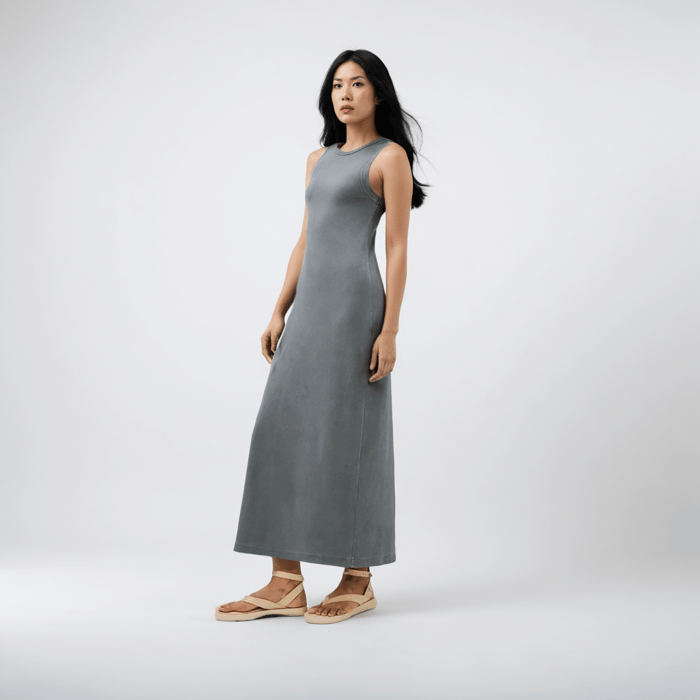
FAQ: AI Recoloring tool
What are AI color changer tools?
AI color changer tools are applications that use artificial intelligence to modify or adjust the colors of clothing, objects, or backgrounds in photos. They allow users to experiment with different palettes instantly without needing advanced photo-editing skills.
Who uses AI color changers the most?
These tools are widely used by fashion brands, online stores, graphic designers, interior decorators, and content creators who want to showcase products or visuals in multiple color variations quickly and realistically.
Are AI color changer tools accurate and realistic?
Yes. Modern AI-powered solutions can accurately capture shadows, textures, and fabric details, ensuring the new colors look natural. However, the level of realism may vary depending on the platform and the quality of the original image.
Do I need editing skills to use AI color changer tools?
Not at all. Most AI color changers are built to be user-friendly. Typically, you just upload an image, select the area or item you want to recolor, choose the new shade, and the AI automatically applies it with realistic results.
Wrapping Up
Recoloring used to be tedious and time-consuming. Now, with tools like Evoto, Pixelcut, and AI Ease, plus AI-driven platforms like Modelia, it’s faster, smarter, and way more flexible.
From fashion eCommerce to product design and beyond, AI recoloring tools are helping brands deliver visuals that convert, without the cost or chaos of constant reshoots.
So whether you’re planning your next product launch or just refreshing your brand visuals, give these tools a try. Your creative workflow (and your budget) will thank you.
How would you rate this article:
Related Articles
- What Will You Be Wearing in 2026? Top Fashion Trends to Watch
- How to Use AI in Ecommerce: Boost Your Sales and Optimize Customer Experience
- 10 Best Artificial Intelligence Marketing Software for Small business
- Text to Video AI: Revolutionizing Content Creation with Automated Video Generation
- 10 AI Tools for Image Enhancement: Boost Your Photos and Product Images
- Influencer Marketing for Fashion Brands: Boosting Visibility Through Partnerships
- Top AI Modeling Tools Transforming Fashion Design
- AI Face Swapping: Transform Photos and Videos with Cutting-Edge Technology
- Understanding the Concept of Futuristic Elegance
- Best 5 AI Color Changer Tools to Instantly Transform Images and Visual Content

